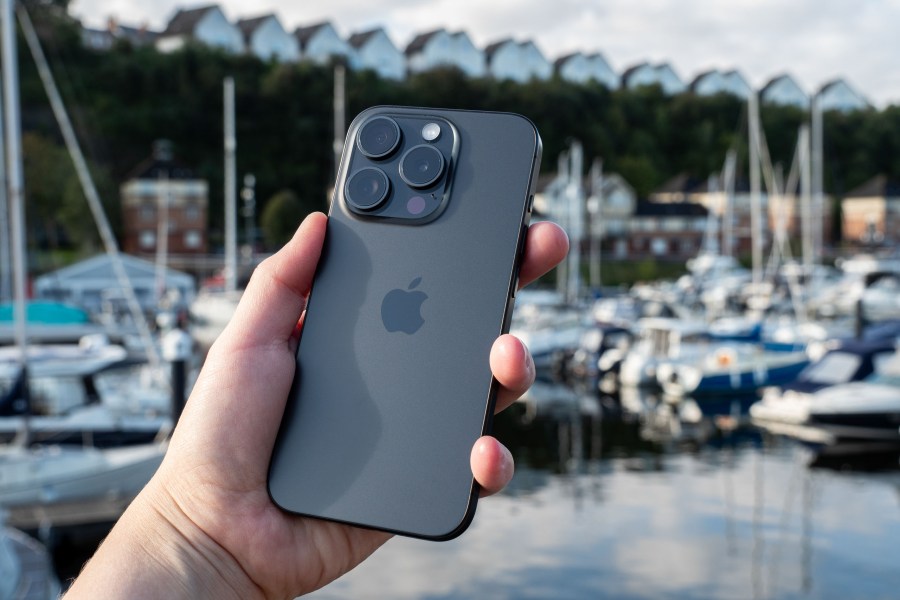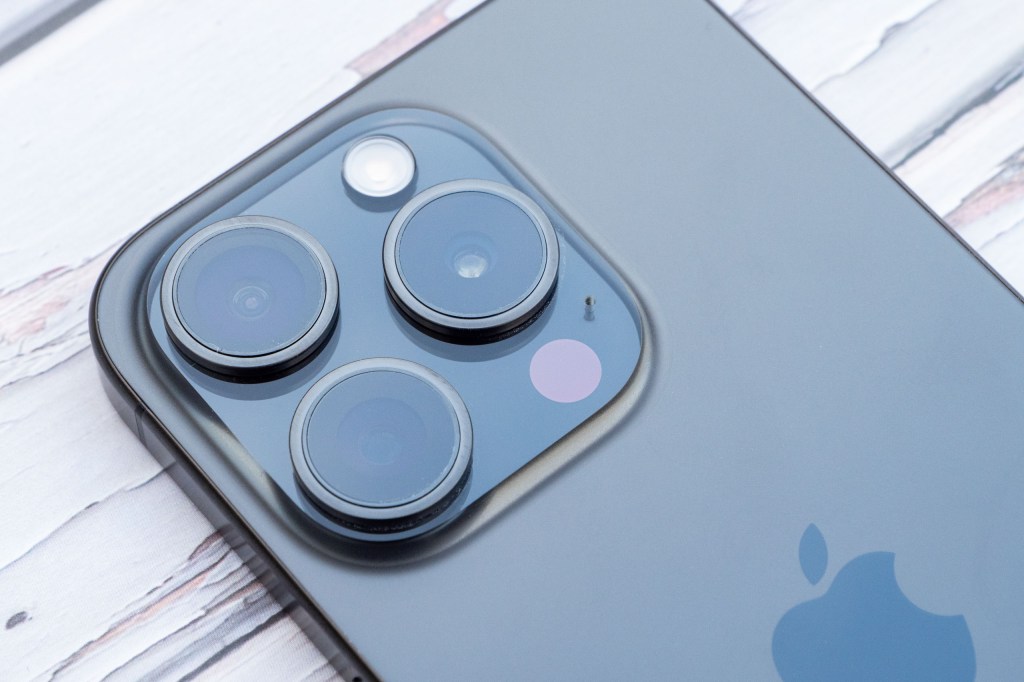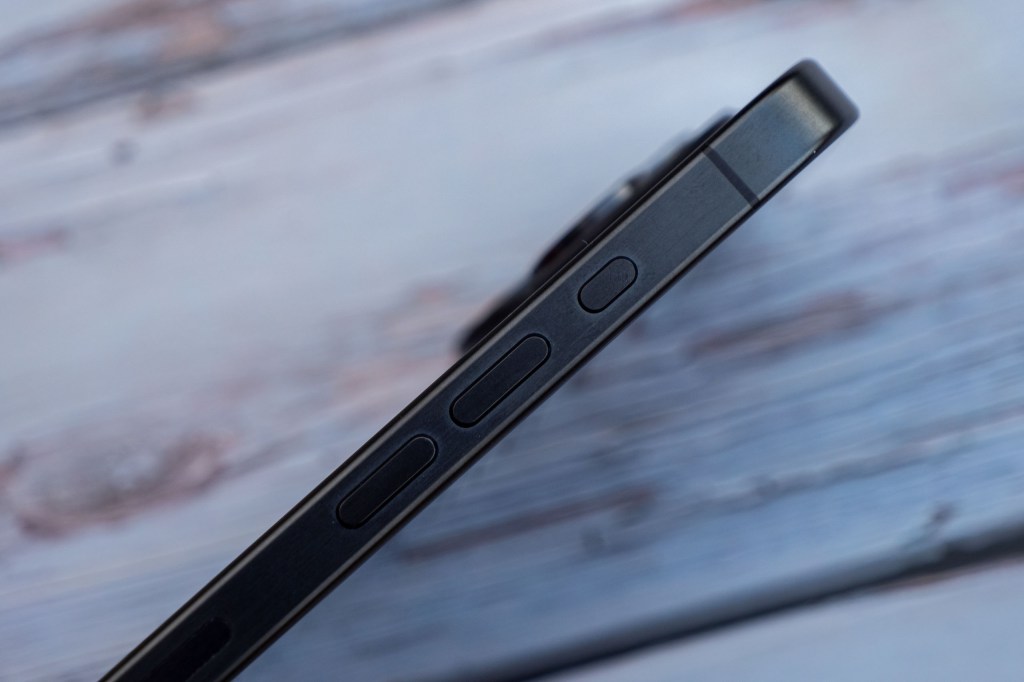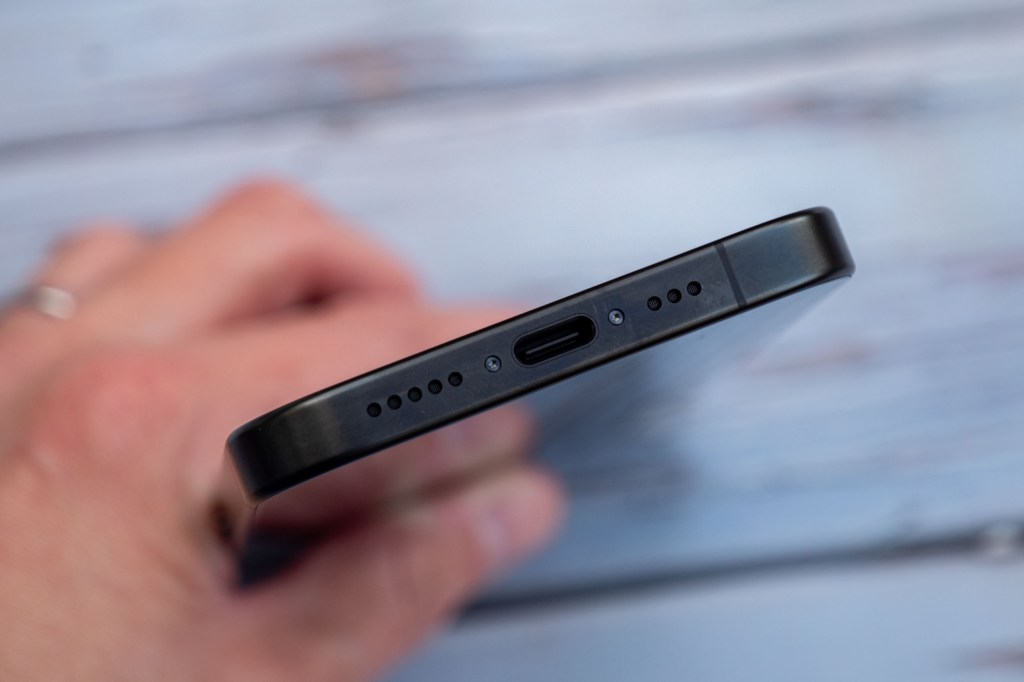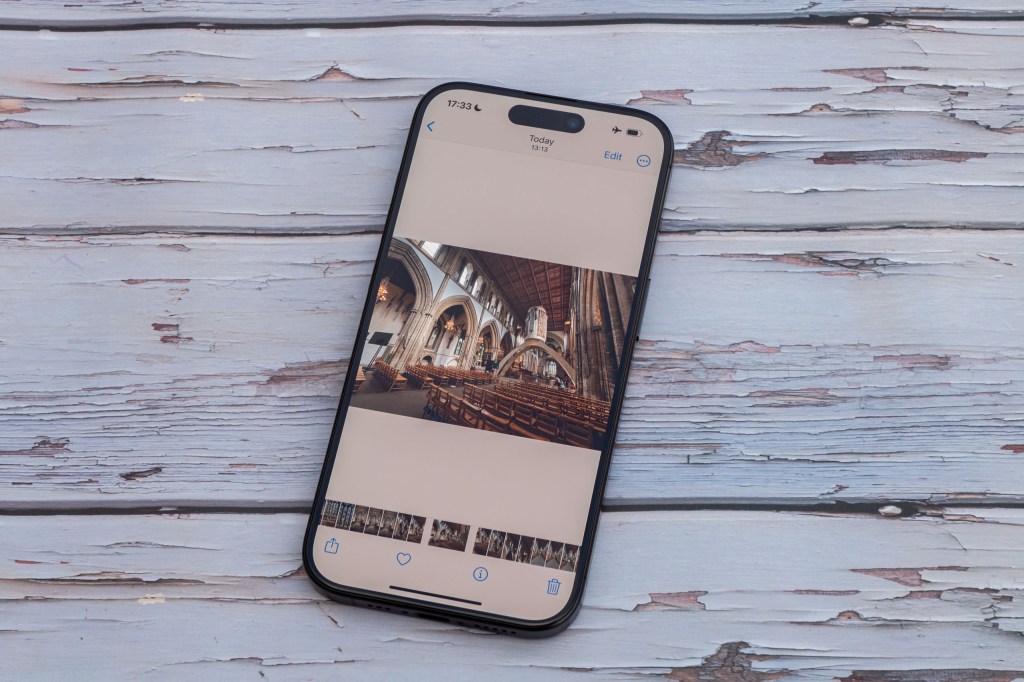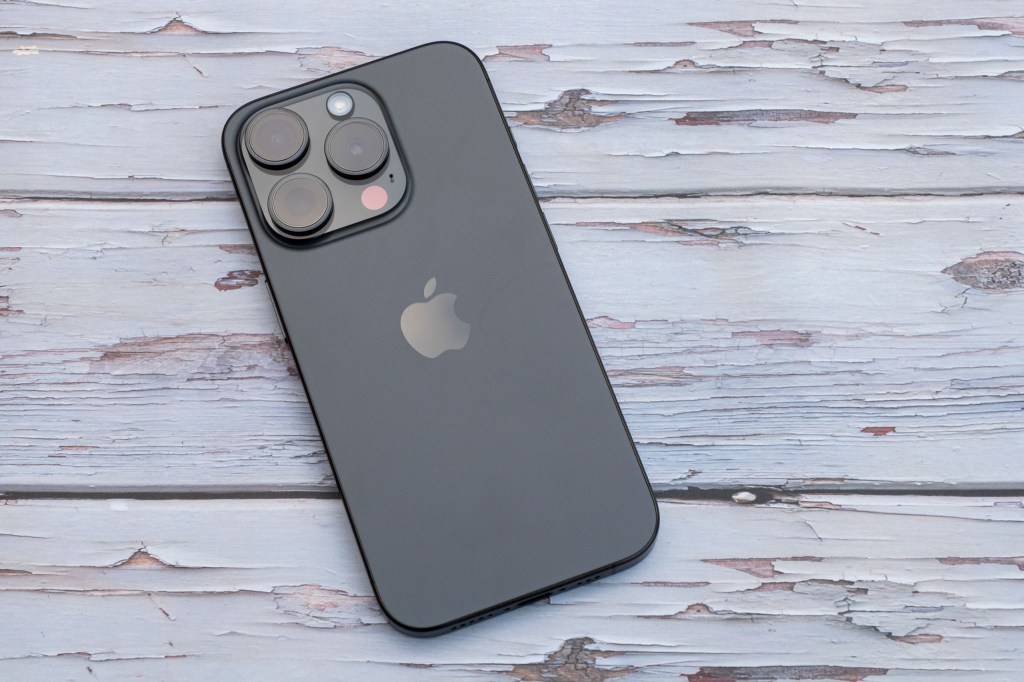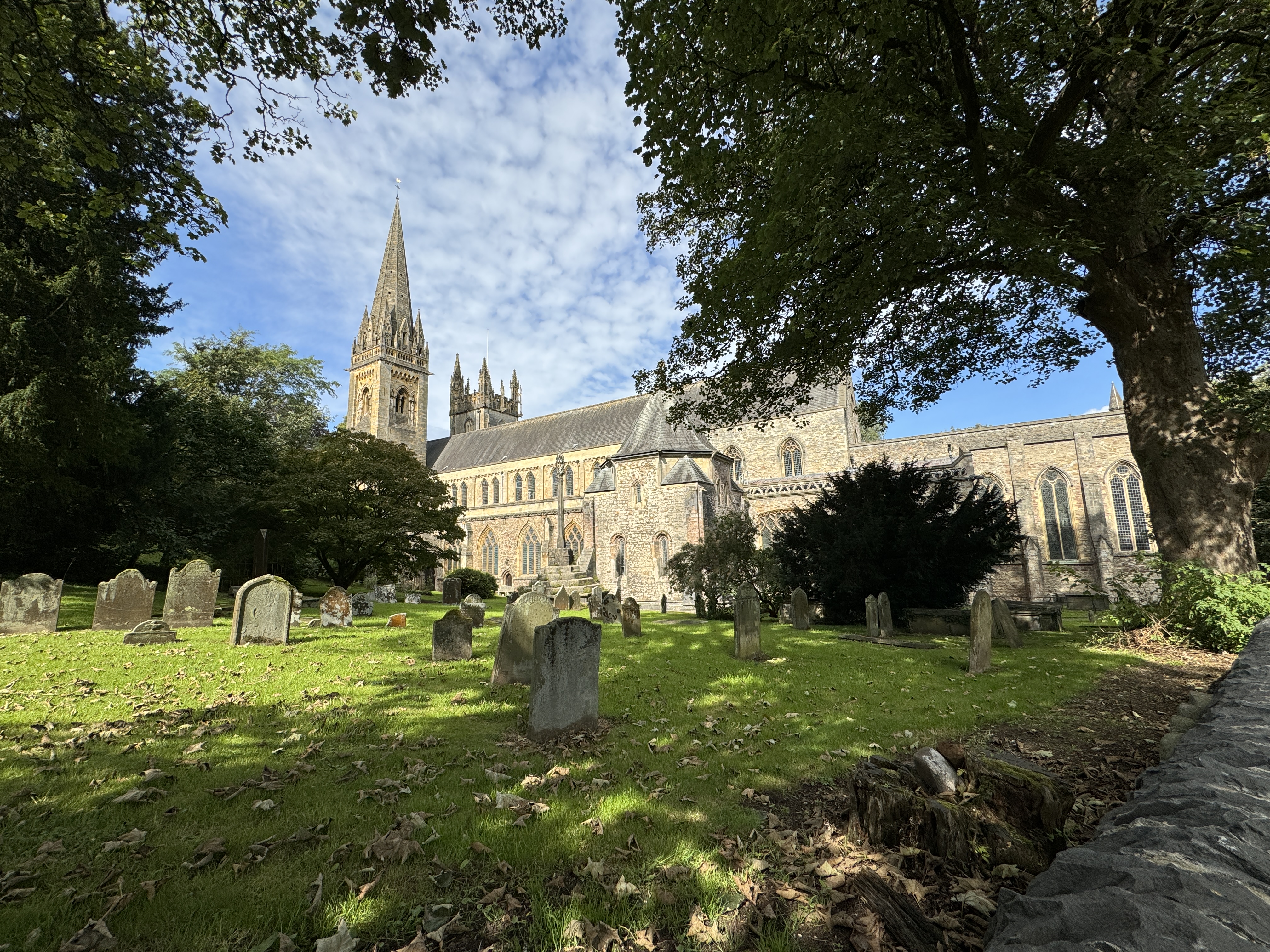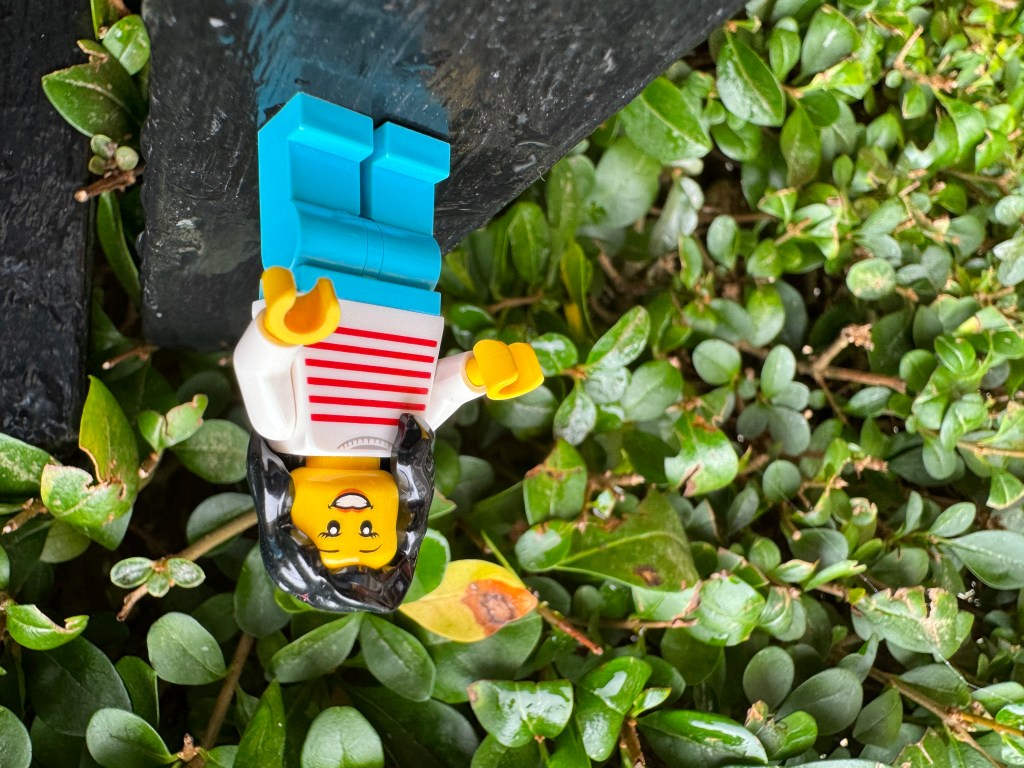Amateur Photographer verdict
An excellent camera set-up, though improvements over its predecessor are more for usability than for image quality.- 3x lens system
- 48MP main lens, 24MP default output and zooming options
- USB-C charging
- High price
- Improvements to cameras are minor
Apple’s flagship iPhone models always do well on our list of best smartphones for photographers. Every year that the new iPhone is released, it’s announced as the best iPhone yet – as one would hope. Here at AP we judge for ourselves how the new cameras fare compared with former ones.
The iPhone 15 Pro has now been around for eighteen months, being superceded by the iPhone 16 in Autumn 2024. We’ve noted in successive reviews of new iPhone cameras that the upgrades are generally subtle (to put it politely). This makes older models more attractive to those buying one primarily for its cameras, given their relative quality at their prices.
For example, how much of an upgrade is this iPhone 15 Pro from the iPhone 14 Pro? Is it worth going for the iPhone 15 Pro Max for a longer zoom and a larger screen? Perhaps it’s more of a jump if you’re coming from an even older model. Read on for the answers to these questions and others…
iPhone 15 Pro at a glance:
- 48MP wide camera, f/1.78 aperture, 24mm equivalent
- 12MP ultrawide camera, f/2.2 aperture, 13mm equivalent
- 12MP 3x telephoto camera, f/2.8 aperture, 77mm equivalent
- 6.1” Super Retina XDR OLED screen
- Titanium chassis
- iOS 17, updates to 18
- 3274mAh battery
- Processor: A17 Pro Chip
We review smartphones from the perspective of choosing one for its photography and camera performance; so we look at what the iPhone 15 Pro cameras offer, and what features are included for photography and video.
iPhone 15 Pro features
Regarding the camera, the iPhone 15 Pro is a gentle upgrade to the already excellent iPhone 14 Pro.
Most of the improvements or changes concern the outward design of the phone body. A few small tweaks are made to the native camera app – some of which are a result of the iOS 17 operating system. These can also be applied to the iPhone 14 Pro and older models too, so are not an advantage particular to the iPhone15 Pro.
There’s a triple-lens setup here, just like with the iPhone 14 Pro. What’s more, the lenses and sensors appear to be exactly the same. There’s a 48MP main sensor, offering 24mm equivalent and f/1.78 aperture, which is joined by a 12MP f/2.2 ultrawide and 12MP f/2.8 3x telephoto lens.
Apple doesn’t disclose its sensor sizes, but as no mention was made of a change in this, we assume the physical hardware is the same here. One small difference is that lenses now have a “nano scale coating”, designed to reduce lens flare.
As before, there’s a “2x lens” option which essentially just uses the central part of the main sensor. Apple list this as an additional lens on its specs pages and elsewhere.
New for the iPhone 15 Pro series is the 24 megapixel standard output for images. Previously, images shot using the 48MP sensor were binned down to 12MP, but now you get twice the resolution. This cannot be done with the older iPhone 14 Pro, even with iOS 17 installed.
However, note that when using certain modes – including Night, Portrait and Auto – the resolution still drops to 12MP.
Also new is the ability to set a “default” focal length for the main lens. You can go with 24mm, 28mm or 35mm. You can also access all three in the main app. This presumably works by using an area of the sensor to create the equivalent focal length without any loss in resolution. Again, this is unique to the iPhone 15 Pro.
Portrait has been improved for the iPhone 15 Pro series. Called “Next generation portrait mode”, the big news here is the ability to automatically recognise portrait subjects (humans and pets) when shooting in the main camera mode. This means you can turn it into a portrait after the fact if you want to – again, this isn’t something that has so far come to iPhone 14 Pro and older.
You can also adjust the focus point retrospectively for Portraits – but this is something that you can also do with older iPhone models with iOS 17 installed (so long as you have shot in Portrait mode in the first place).
Otherwise, the camera software and hardware appear to be largely the same. We have the same Macro mode, the same Night mode, and the ability to shoot in ProRAW. With iOS 17, you can now opt to shoot in full 48MP resolution with both JPEG and raw, so that can also be applied to older models. The new iPhone 15 Pro models use Smart HDR 5, rather than Smart HDR 4 of the iPhone 14 Pro – whether this makes much difference remains to be seen (but seems unlikely).
We still get 4K video at up to 60fps, and other modes such as Cinematic and Action have continued. One new addition is Log video recording. This is likely to appeal to high-end videographers and content creators; but not matter to the rest of us.
There is a new Titanium material for the body chassis, as distinct from the stainless steel of the iPhone 14 Pro. This makes it lighter despite being (every so slightly) thicker than its predecessor. The silencer switch on the side of the iPhone is now an “Action” button which can be set to control a number of functions – one for photographers is the long press to launch the native camera app.
The matt glass back remains, while the front is a 6.1” Super Retina XDR OLED display, with 2556 x 1179 pixels, at 460ppi and 120Hz. This is same as the iPhone 14 Pro. The “Always on” display has been kept, and we have the same IP68 waterproofing as its predecessor, too.
At long last, Apple has joined the USB-C revolution for charging, ditching its long-favoured Lightning cables for the iPhone 15 series. This means you can use the same cable as a lot of your other hardware, including computers and cameras. Battery charge lasts about the same, and other features such as Fast Charging and Wireless Charging are also retained.
A new processor made its debut in the iPhone 15 Pro series – the A17 Pro Chip in place of the A16 Bionic Chip. This should make overall operation faster and smoother, but is probably more of interest to gamers and the like who rely on super-fast processors.
Handling and Design
As has been the case with previous models, the iPhone 15 Pro series is available in two different sizes. The iPhone 15 Pro has a 6.1” screen, compared to 6.7” for the iPhone 15 Pro Max.
For the most part, the camera and general operation of the phone between the two models is the same. The larger Pro Max has a 5x zoom rather than a 3x zoom though: something to consider if deciding between the two.
Otherwise, the smaller iPhone 15 Pro may hold more appeal, and fit into more pockets. It’s also cheaper than the iPhone 15 Pro Max. The “downside” is that there is less about it to really enhance your photos and videos noticeably.
The design of the phone is very close to the iPhone 14 Pro, having very similar measurements. The iPhone 15 Pro is 146.6 x 70.6 x 8.25mm, compared to the iPhone 14 Pro’s 147.5 x 71.5 x 7.85mm. In other words, the iPhone 15 Pro is very slightly narrower, and a tiny bit thicker. Despite this, it weighs just 187g, compared to the 221g of its predecessor: impressive on paper, but in practice feels little different.
Apple has stuck with the flat edges, and rounded corner design of the past couple of iPhone generations. It looks slightly chunkier than many Android equivalents, but that’s not to criticise its appearance – always a matter of taste.
Colour-wise, all the new models have “Titanium” in the name, but are called Black, White, Natural or Blue. The choices are perhaps a bit muted, and all have a matte finish. Again, personal preference rules here.
What’s perhaps more important is the durability of the phone, with the front boasting a “Ceramic Shield” which Apple claims to be tougher than any smartphone on the market. The iPhone 14 Pro also has this – our model, after more than a year of constant use, has no scratches on it at all – pretty impressive. We can expect the same here. The IP68 rating means the phone is water resistant to a depth of 6 metres for up to 30 minutes. The chassis is made of Titanium, rather than Stainless Steel.
Native camera app
The native camera app for the iPhone 15 Pro hasn’t changed a great deal since its predecessor. On the whole, it’s a simple and straightforward setup – with still no introduction of a more advanced or extensive “Pro” mode – this is something you can install via many third-party apps if you want it though.
By default, the native app will start in “Photo” mode, which is where you’ll likely do the vast majority of your shooting – especially as now most other modes and options can be accessed directly from here too.
You will see along the bottom the option to choose between the four different “lenses” – .5, 1, 2 and 5. You’ll know which one is selected by virtue of it displaying as 0.5x, 1x etc if you have. A new feature here is the ability to keep tapping the 1x lens to toggle between 24mm (1x), 28mm (1.2x) and 35mm (1.5x). You can set 24/28/35mm as the default start option in the main menu if you’d prefer to consistently use one.

The default output resolution is now 24MP when shooting with the main lens, sticking at 24MP for 2x, but dropping to 12MP for the ultrawide and telephoto (as these have only 12MP sensors). You can also shoot in raw, with options to either record at maximum resolution (48MP) or at 12MP. A new addition here is full resolution JPEG. You’ll need to enable all of these options from the main menu, but once you do, they’ll be accessible from the main camera app window.

Macro mode will kick in when you get close enough to a subject. This works by switching to the ultrawide lens, so again the higher resolution is lost when that happens. It allows you to get super close to a subject, but occasionally you might find you’re better off without it – in which case a quick tap of the icon swictches it off.

A set of extra functions is hidden until you tap a small arrow at the top of the screen. Tapping it reveals things such as flash, aspect ratio, exposure compensation, timer, picture styles and so on. This is not new to the iPhone 15 Pro series; it simply gives scope to make necessary adjustments.
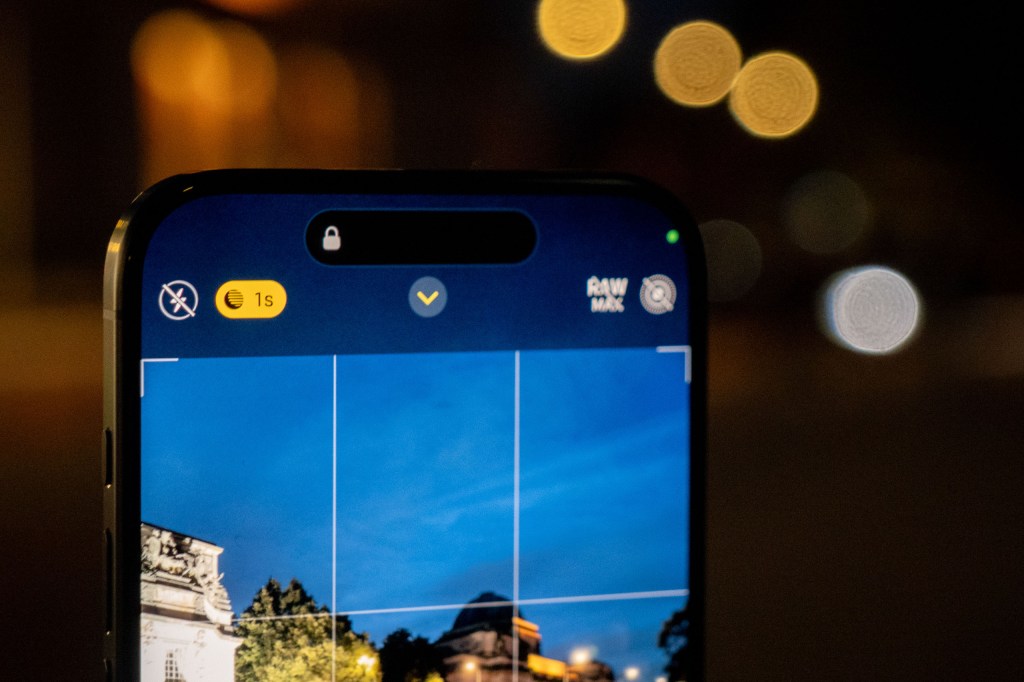
Night mode should automatically switch on should the phone detect light is low. If it does, you can extend the length of the exposure if you like, but generally it’s easier to let it do what it thinks best. Again, worth noting that full resolution drops down to 12MP when using Night mode.
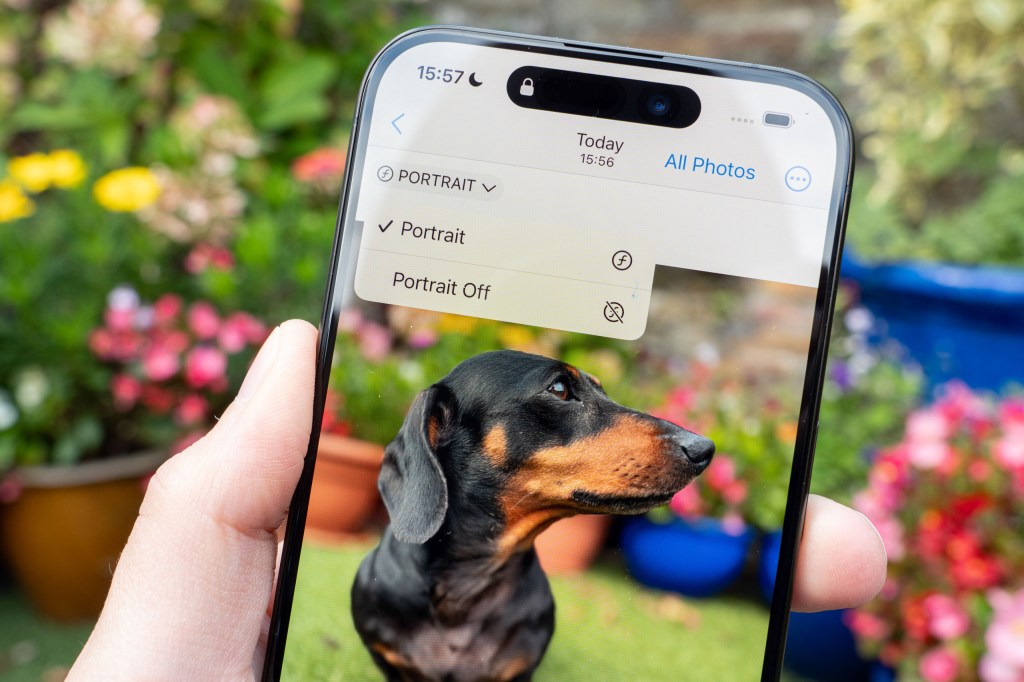
A new function for iPhone 15 series is automatic portrait mode. When the phone detects it is looking at a human or pet, a small “f” (to denote aperture) pop ups in the bottom of the screen. Shoot the picture as intended, and it will create a portrait effect. If you don’t like it, you can switch it off at the point of capture, or remove it afterwards. This is great for quick shots of people and pets, particularly those that are likely to move from their spot at any time. You will see the “f” pop up when using either the 1x, 2x or 3x lens option, but not the ultrawide.
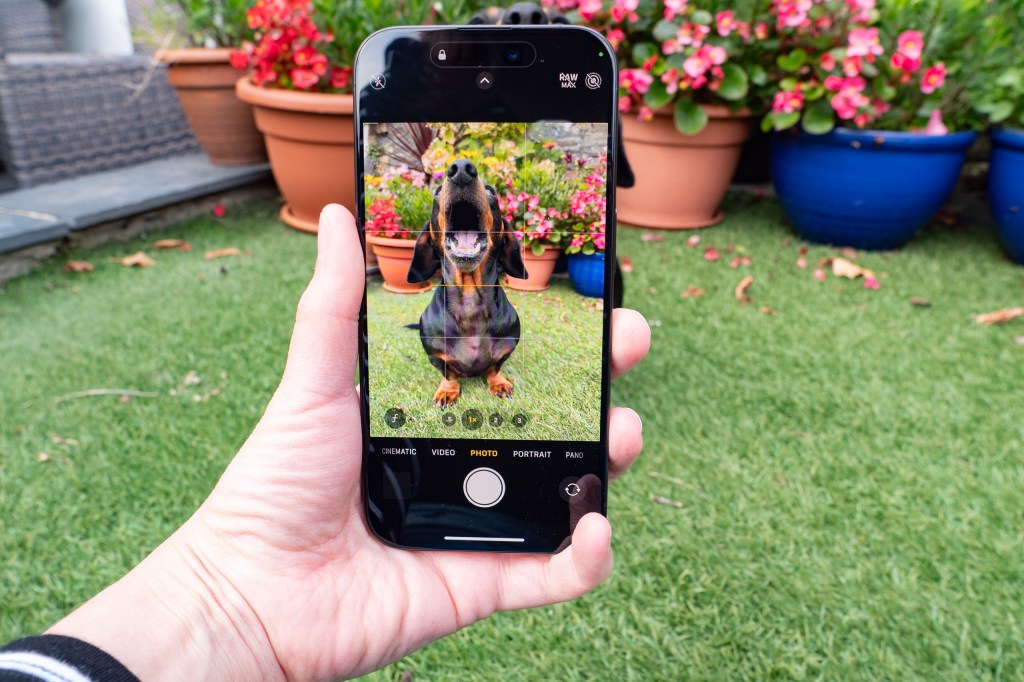
Alternatively, you can still shoot in the dedicated Portrait mode. Doing so presents a few more options at the point of capture – including the different “lighting” modes. Again, these can be adjusted afterwards. A nifty new feature which has just come to iOS 17 (also applicable to older iPhone models) is the ability to change the Focus point after the fact. Tapping Edit on your photos in playback lets you shift the focus point to anywhere on screen – great if it’s not quite right, or eg focused on the “wrong” person or animal. You can also adjust the strength of blur.
As before, you can grab quick video clips by holding down the shutter button, but there’s also a dedicated video mode which gives more control over things like frame rate and resolution. ProRes and Action mode can also be accessed from the video mode. Cinematic video allows you to record shallow depth of field videos, while other options such as Time-Lapse and Slo-Mo are also retained.
Image Quality and Performance
Image quality from iPhone is always excellent, but the question here is whether there’s been any notable improvement for the iPhone 15 Pro, compared to the iPhone 14 Pro (and earlier generations).
If we look at images taken with both phones side by side, it’s hard to spot much of a difference in most scenarios, with just a marginal improvement seen for the iPhone 15 Pro under close scrutiny.
The ability to shoot at 24MP with the main sensor is one such improvement. On the whole, this doesn’t really make much difference if you only ever view your photos on the iPhone screen, but, it gives you some benefits if you need to crop your shot after the fact and maintain high resolution.
Looking at the images in isolation reveals that we’ve got a very well performing set of sensors here again. Although you might not notice a big jump from the iPhone 14 Pro, if you’ve waited a while before upgrading, you likely will see more of a difference – particularly if you’re using iPhone 12 Pro or earlier.

Colours are bright and vibrant, while also well-matched between the three lenses. Exposures are on the whole well judged, with very little need for interference to adjust brightness or change the metering point in most situations.
Of the three lenses, the main one creates the best images, as you’d expect. The ultrawide also performs well, while the telephoto is best reserved for good lighting situations. Although there is no 5x zoom here as with the iPhone 15 Pro Max, you have the option to get that little bit closer digitally, and the results at 5x digital are reasonably good.
We’d also venture that 3x zoom is sometimes a better, more sensible option than 5x in the first place – so you could probably say that the iPhone 15 Pro is the better choice.
Having the different 24/28/35mm option from the main sensor, as well as the 2x (48mm) lens means you get a great degree of flexibility to shoot at a variety of popular focal lengths without losing quality: a really nice addition for this model.

Portrait mode puts in probably about the same performance as the iPhone 14 Pro, which is to say it’s very good. The ability to take a Portrait without switching to Portrait mode is a welcome addition, as is the ability to change the focus point after the fact – though this doesn’t improve image quality per se.
Selfies are pretty good too, with the front-facing camera boasting autofocus, as well as the ability to add a blurred background effect afterwards if desired. In the same way, the rear-facing cameras automatically detect a portrait subject.
In its keynote, Apple claimed that the iPhone 15 Pro benefits from seven different lenses. To get to that number it includes not only the three main lenses, but also the 2x, 24, 28 and 35mm options, plus the macro mode. It’s a stretch to describe the macro shooting mode as an additional lens: call it what you like, it produces good results. Images are finely detailed and the ability to get close enough to almost touch a subject allows for creative possibilities.
As we’ve seen with previous iPhone generations, the best results for low light shooting are again from the main lens. Here, you get plenty of detail and not too much noise. Results are also good from the 2x option – which, as it’s using the main sensor is to be expected.
The results from the ultrawide in low light are fairly good, but are a noticeable drop down in quality from the main lens. The 3x lens is usable enough, but probably not what you’ll want to use to create your best shots. Portrait mode can be mixed with Night mode for “Night Portraits”. At 1x, the results are pretty good, but they look pretty ropey at 2x or 3x – for now, we’d stick to traditional cameras for those for mid-longer focal length portraits.
Video quality is pretty much on par with the iPhone 14 Pro, being smooth and stable with nicely vibrant colours. You’ll see the best results if you view videos on a Dolby HDR compatible device – such as the iPhone itself – but it’s easy to see why many content creators are happy to use their iPhones to record video without the need for elaborate or expensive additional equipment.
Value for Money
As we all know, iPhones are not cheap, but actually, in the end, the base price of the iPhone 15 Pro turned out to be cheaper than its predecessor. Its price now that it has been succeeded by the iPhone 16 Pro is lower still.
If you’re happy to only have 128GB of memory – which is probably more than enough if you’ve signed up to cloud services – then it’ll set you back $900 / £799. That puts it competitively priced against the likes of the similarly sized Samsung S23, but more expensive than something like the Pixel 7 Pro, which has a similar camera setup, but a much larger screen.
The price increases if you want/need more memory – going up to $1,499 / £1,499 for the 1TB version. I’d question how many people need that level of memory, but there it is for those that need it.
iPhone 15 Pro Verdict
True to form, the iPhone 15 Pro was indeed the best iPhone to date but, for photographers, not by much over its predecessor. (Spoiler alert: the iPhone 16 Pro continues this trend.) It’s fair to say that the improvements on the iPhone 14 Pro are marginal and, for most people, not enough to merit the upgrade. Image quality is generally about the same as the iPhone 14 Pro. While that means it’s very good, excellent even, there is no great leap forward in this respect.
Most of the improvements come in the form of usability – such as the automatic portrait mode, the additional 1x lens options, and hardware changes such as the new Action button and the addition of a USB-C port for charging. Whether you’re willing to buy a new phone to get these improvements comes down to personal taste and budgets – though it’s worth noting that if you have an iPhone 14 Pro you will probably be able to trade it in for roughly half the cost of the new model.
If you’ve been quite sensible and have a much older iPhone, say an iPhone 12 Pro or even iPhone 13 Pro, the differences in image quality are more marked and arguably more worthy of spending your cash to get.
By including a slightly different setup between the iPhone 15 Pro and the iPhone 15 Pro Max, Apple has created a dilemma for photographers. Should they plump for the smaller device but be happy with 3x zoom, or pay a little bit more for the 5x zoom (and other benefits like a larger screen)? Again, it’s hard to answer that without knowing what kind of shooter you are – some will simply prefer a 3x zoom, while others will crave that little bit of extra reach. Personally, I’d say that for many, the smaller screen and that sensible zoom is just about the perfect balance – but then I’m a fan of smaller phones in general. You may feel differently.
What about when we compare it to Android models? Neither iPhone 15 Pro, nor the iPhone 15 Pro Max has done enough to steal the crown from the Samsung S23 Ultra as the best smartphone for photographers, but it compares very favourably against other flagship models and those which are closer in price to the iPhone models.
Overall, as predicted before the specs were even confirmed, Apple has produced another excellent device. Yes, it will make it onto our list of the best smartphones for photographers – it’s probably even in the top 3. Do you need it? Probably not, but since when has that ever stopped anybody picking one up?

For more options read our Best camera phones for photography.
Related articles:
- iPhone vs Android: Which is better for photography?
- iPhone 14 Pro vs Samsung S23 Ultra: which smartphone is best for photographers?
- iPhone 14 Pro vs Google Pixel 7 Pro
- Best smartphones for video

